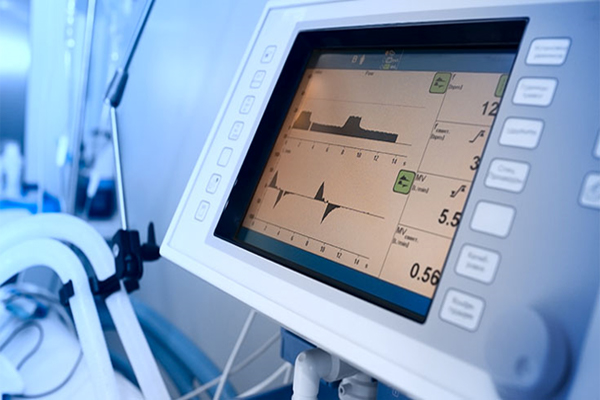

Mechanical Ventilation for acute respiratory failure is now routine in the ICU. Almost all ventilator modes that are conventionally applied during intubated Ventilation can also be applied non – invasively. However, IV remains the primary mode of respiratory assistance in critically ill patients.
Endotracheal Intubation / Tracheostomy
• For airway protection
• For suction of Secretion
• To assist sedation and neuromuscular paralysis
• To overcome upper airway obstruction
Mechanical Ventilation (MV)
• To manipulate alveolar Ventilation and PaCO2.
• To increase Sao2 and PaO2
• To decrease work of Breathing ( WOB )
• To increase FRC
• To stabilize the chest wall in severe chest injury.
Modes of Ventilation
The Simplest form of positive pressure breath occurs in a relaxed subject and the ventilator provides a constant gas flow during inspiration. Because CMV may not match respiratory drive, spontaneous support and assisted breaths are not possible during CMV.
CMV is useful in conditions where there is alveolar Hypoventilation / or when PaCo2 needed to be maintained in a fixed range / when WOB needs to be minimized.
• Assist Control Ventilation (ACV)
During ACV, in addition to the set frequency patient effort can trigger a standard CMV breath. This allows greater patient comfort and tidal volume is controlled at a safer level.
• Synchronised Intermittent Mandatory – Ventilation
It allows the patient to take unimpeded breaths while still receiving a background of controlled breaths. Proposed advantages are reduction in sedation and adverse hemodynamic consequences. Less Barotrauma, improved intrapulmonary gas distribution, continued use of respiratory muscles, and faster weaning.
• Pressure Support Ventilation
During PSV, each patient triggered breath is supported by gas flow to achieve a preset pressure, usually designated to be above the PEEP.PSV leads to a significant and important reduction in WOB.
• Proportional Assist Ventilation (PAV)
It is a form of partial ventilatory support where inspiratory pressure is applied in proportion to patient effort. Only suitable if the respiratory drive is normal or elevated.
• Neurally adjusted ventilatory Assistance (NAVA)
During this, a modified NG tube is used to record diaphragmatic electrical activity, which is used to control the assisting level of Inspiratory pressure. It helps in improved patient-ventilator interaction, less synchrony, and less over resistance compared with PSV.
• Bi-level Ventilation
It is also known as BIPAP. This is a ventilator mode where two levels of airway pressure are provided.
• Airway Pressure Release Ventilation (APRV)
During APRV Spontaneous breathing is possible in addition to time-triggered and time cycled biphasic pressure levels.
• High-Frequency Ventilation (HFV)
HFV encompasses a technique where small tidal volume (1-3ml / Kg) is delivered at high frequency (100/600/ Mt). This offers reduced tidal lung stretch and reduced VILI.
Dr. Nimish Daniel, MBBS, MD (Anaesthesiology), PDCC (Neurology)
Anaesthesiologist
